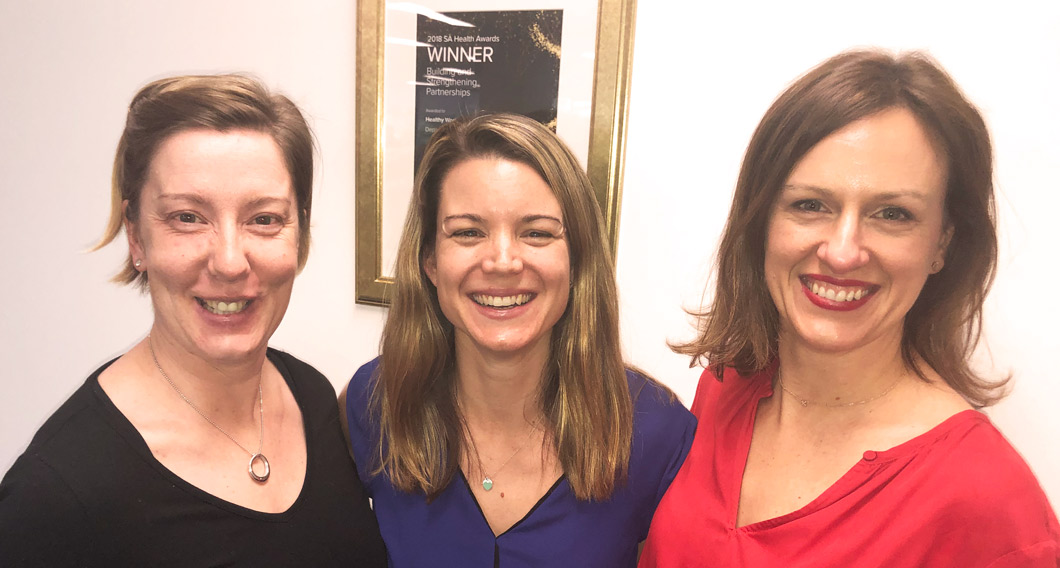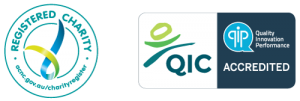
Name
Healthy Workers Team
Nadia Mastersson, Isla Woidt and Cory Stewart
Job title
Nadia: Manager, Partnerships and Programs
Isla: Senior Project Officer
Cory: Senior Project Officer
Organisation
SA Department for Health and Wellbeing
What are you/your organisation currently focusing on in terms of workplace health and wellbeing?
We are currently building on the learnings of the Healthy Workers – Healthy Futures (HWHF) initiative which wrapped up last year. HWHF was an industry-led approach to workplace health and wellbeing which partnered with high-need industries to drive workplace and industry level change. We are continuing to work with peak bodies through our Chamber of Commerce, BusinessSA.
Our current focus is on providing support to our key state-wide partner agencies to strengthen the system that supports businesses in South Australia. We provide support to workplaces through resources, training courses and our Community of Practice.
We won an award for our work in building and strengthening partnerships.
What aspect of workplace health and wellbeing does your organisation do well in?
Being a team of part-time employees, we have to say the flexible work arrangements!
We are also in the process of supporting the development and implementation of a Mentally Healthy Workplace Framework across the public sector.
What’s your biggest challenge working in workplace health and wellbeing?
We are always striving to keep workplace health and wellbeing on the national agenda, across a range of sectors, as we know it is such an important setting to address the prevention of injury, illness and disease.
More locally, we are continuing to engage with and build the capacity of industry and workplaces, but we find small business support especially challenging.
How does WayAhead Workplaces add value to your organisation’s health and wellbeing program?
WayAhead Workplaces is a great source of information for us to keep abreast of new resources, information and events in this space and we can also filter this information down to our networks.
It has been a source of inspiration for us to set up our own community of practice in South Australia to link together businesses in a supportive network and learn from each other.
How do you deal with stress?
As a small team, we are very supportive of each other about what is going on both at work and at home. We regularly check in with each other’s workload and help out where we can.
We are lucky to have access to flexible working arrangements such as working from home to manage work-life balance.
We have also taken time to practice meditation together in our lunch breaks to help us maintain a healthy perspective and calm mind.
What are the key issues and considerations for people in workplace health and wellbeing roles?
Having leadership support and commitment is integral. A culture of health and wellbeing starts at the top.
The integration of health and wellbeing with safety is also really important. Unless there is a good safety culture, it is difficult to implement effective health and wellbeing strategies. The key is to embed health and wellbeing into existing business practices and processes (including WHS and HR functions) so that it is woven into the culture of the workplace. Having an integrated approach can also help overcome the issue around lack of time and resources as it becomes a team effort.
How do you switch off from work?
We are all pretty active and have kids that keep us on our toes!
Also, you can’t beat a good Barossa red wine.
What is your best time-saving tip?
We are all part-time workers so we need to be smart about our capacity and where we direct our energy and resources.
Turning off the pop ups (which tell you when you have new mail) in your email account and only checking emails a few times a day saves time getting distracted and trying to multi-task.
What do you think the future of work health and wellness programs look like?
In South Australia, we have state monitoring data that shows workers increasingly believe employers should place a high priority on promoting the health and wellbeing of their employees, rising from half of SA workers in 2011 to more than three quarters in 2018.
This data along with the growing trend amongst millennial workers demanding purposeful work and good work-life balance means that we will likely see workers much more involved in future work health and wellness programs.


